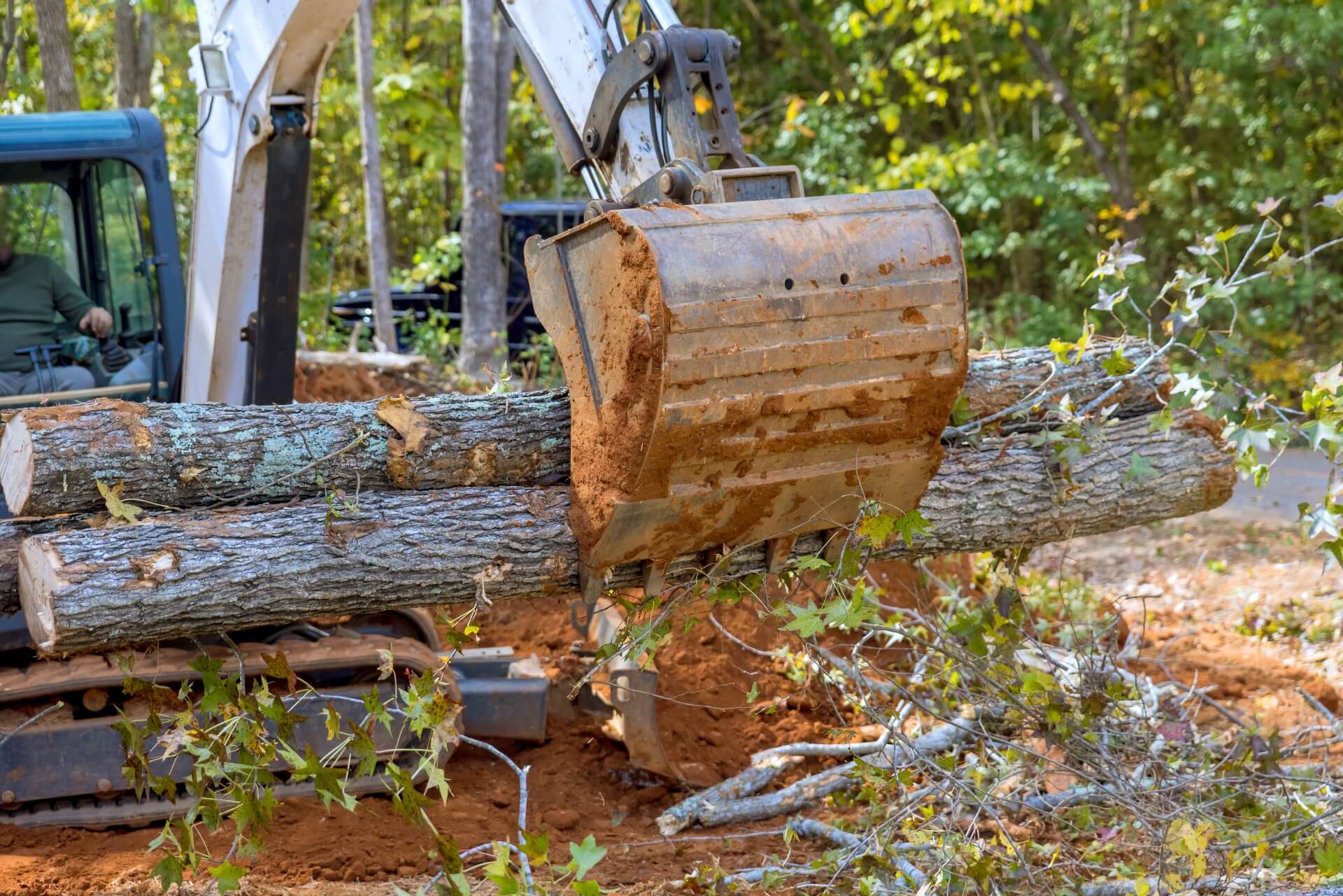The Answer to “Will Homeowners Insurance Cover Preventative Tree removal?”
Property owners often wonder about insurance coverage when they spot a potentially dangerous tree on their property. The short answer is no – homeowners insurance won’t cover preventative tree removal in most cases. Insurance companies view tree removal as regular maintenance, much like mowing the lawn or cleaning gutters.
This reality leaves many homeowners feeling stuck between expensive tree care costs and potential property damage. However, understanding why insurance works this way helps property owners make better decisions about protecting their homes and budgets.
Most insurance policies only kick in after damage occurs. This means waiting for a tree to fall and cause problems before getting any financial help. Smart property owners don’t wait for disaster to strike – they take action before problems develop.
Why Insurance Companies Won’t Pay for Tree Removal Before Damage Occurs
Insurance companies operate on a simple principle: they cover unexpected damage, not routine upkeep. When homeowners ask “will homeowners insurance cover preventative tree removal,” the answer stays consistent across different insurance providers.
Think about other home maintenance tasks. Insurance doesn’t pay for painting, roof cleaning, or HVAC tune-ups. These activities prevent future problems, but they’re considered the homeowner’s responsibility. Tree care falls into this same category.
The insurance industry keeps premiums affordable by limiting coverage to actual emergencies. If companies paid for every potential problem, monthly costs would skyrocket for everyone. Instead, they expect property owners to budget for regular maintenance and preventative care.
This approach makes sense from a business standpoint, but it leaves homeowners responsible for identifying and addressing tree problems before they become expensive disasters.
When Does Insurance Actually Cover Tree-Related Costs?
While the question “will homeowners insurance cover preventative tree removal” gets a negative response, certain situations do qualify for coverage. Understanding these exceptions helps homeowners know when they can expect help.
Storm damage creates the most common scenario for insurance coverage. When severe weather knocks down trees that damage homes, vehicles, or other structures, most policies will pay for repairs and cleanup. The key factor is actual damage – trees must hit something covered by the policy.
Some policies include limited coverage for tree removal when fallen trees block driveways or essential access routes. This coverage typically caps out at $500 to $1,000 per tree, with annual limits around $1,500 total. Even then, the tree must already be down to qualify.
Fire, lightning, or vandalism can also trigger coverage for tree-related cleanup. Again, the tree must cause actual damage or fall due to a covered event. Simply removing a tree struck by lightning but still standing usually doesn’t qualify for coverage.
The Real Cost of Waiting for Insurance Coverage
Since homeowners can’t rely on insurance for preventative care, waiting for coverage often leads to much higher expenses. The financial impact of delayed tree care extends far beyond the initial removal costs.
A diseased tree that falls during a storm can cause tens of thousands of dollars in damage. While insurance might cover structural repairs, homeowners still face deductibles, potential premium increases, and months of dealing with contractors and adjusters.
Emergency tree removal costs significantly more than planned removal. Storm cleanup often runs two to three times higher than regular tree service due to urgent response needs and complicated working conditions around damaged property.
Common Warning Signs That Indicate Tree Removal is Needed
Professional arborists like ArborWorks know what to look for when evaluating tree health and safety. Since insurance won’t cover preventative work, recognizing these warning signs becomes critical for property protection.
Dead or dying branches pose immediate risks during storms. These branches break easily and often fall without warning. Large dead branches can cause serious injury or property damage, making removal a safety priority rather than just a maintenance issue.
Root problems often develop underground where property owners can’t see them. Exposed roots, soil erosion around the base, or leaning trees indicate potential foundation issues. Trees with compromised root systems become unstable and prone to falling during wind events.
Disease symptoms vary by tree species but often include discolored leaves, unusual growth patterns, or visible fungal growth. Many tree diseases weaken the internal structure, making trees dangerous long before external symptoms become obvious.
Pest infestations can hollow out trees from the inside, leaving them structurally unsound despite appearing healthy from the outside. Termites, borers, and other insects cause damage that often requires complete tree removal to prevent safety hazards.
Planning Your Tree Care Budget Without Insurance Help
Smart property owners develop maintenance budgets that include regular tree care. Since the answer to “will homeowners insurance cover preventative tree removal” remains no, planning ahead prevents financial stress when problems arise.
Annual tree care costs vary based on property size and tree quantity. Most homeowners should budget $500 to $1,500 yearly for routine maintenance, including professional inspections, pruning, and minor removals. This investment prevents much larger expenses down the road.
Creating a priority system helps spread costs over time. Professional tree health inspections identify which trees need immediate attention versus those that can wait. This approach allows homeowners to address the most critical issues first while planning for future work.
Emergency funds specifically for tree care provide peace of mind during storm season. Louisiana’s hurricane season makes this planning particularly important, as storm preparation and cleanup costs can strain household budgets without warning.
How Professional Tree Assessment Protects Your Investment
ISA-certified arborists bring specialized knowledge that helps property owners make informed decisions about tree care. Professional assessment identifies problems before they become emergencies, saving money and preventing property damage.
Certified arborists understand tree biology, disease identification, and structural analysis. This expertise allows them to spot problems that untrained observers might miss. Early detection often means less expensive treatment options and better outcomes for tree health.
Professional evaluations consider multiple factors including tree species, age, location, and environmental conditions. Arborists also assess proximity to structures, power lines, and other potential targets if tree failure occurs. This comprehensive approach helps prioritize removal decisions based on actual risk levels.
Regular professional inspections catch problems during early stages when treatment might still be possible. Some tree issues can be addressed through selective pruning or disease treatment, avoiding the need for complete removal.
Storm Preparation: Why Waiting Isn’t Worth the Risk
Louisiana’s hurricane season makes proactive tree care a smart investment rather than an optional expense. Since homeowners can’t count on insurance for preventative care, storm preparation becomes a property owner’s responsibility.
Professional storm preparation and risk mitigation services identify trees most likely to fail during severe weather. This assessment considers factors like tree health, structure, and wind exposure to determine which trees pose the greatest risks.
Strategic tree trimming reduces wind resistance and removes weak branches before storms arrive. This preventative approach costs much less than emergency cleanup and repairs after storm damage occurs.
Trees that survive storms in good condition often avoid the stress that makes them susceptible to disease and pest problems later. Proper storm preparation protects both immediate safety and long-term tree health.
The ArborWorks Approach to Preventative Tree Care
ArborWorks understands that property owners need reliable solutions when insurance won’t cover preventative tree removal. Our ISA-certified team provides comprehensive services that protect both property and budgets through proactive care.
Certified arborists evaluate every tree on a property to identify potential problems before they become emergencies. This thorough approach helps homeowners understand which trees need immediate attention and which can be monitored over time.
Detailed estimates help property owners budget for necessary work without surprise expenses. Understanding costs upfront allows families to plan financially for tree care and avoid the much higher costs of emergency services.
Our team uses proper equipment and techniques to ensure safe, efficient tree removal that protects surrounding property. Professional tree removal minimizes risks to structures, landscaping, and neighboring properties during the removal process.
Long-Term Benefits of Proactive Tree Management
Property owners who invest in preventative tree care enjoy multiple benefits beyond avoiding emergency expenses. Proactive management protects property values while maintaining the beauty and environmental benefits of healthy trees.
Well-maintained landscapes with healthy trees increase property values significantly. Regular care preserves these landscape investments while preventing problems that could reduce property appeal or create liability issues with neighbors or insurance companies.
Planned tree removal allows property owners to choose replacement trees that better suit their landscape goals. This approach creates opportunities to improve the overall landscape design while addressing safety concerns proactively.
Healthy trees provide environmental benefits including energy savings through shade, improved air quality, and better stormwater management. Proper care maximizes these benefits while minimizing risks associated with poorly maintained trees.
Working with Qualified Professionals for Best Results
Choosing the right tree care company makes a significant difference in both safety and cost-effectiveness. Since insurance won’t cover preventative work, getting the job done right the first time becomes even more important.
ISA certification demonstrates commitment to professional standards and ongoing education in tree care practices. Certified arborists stay current with best practices, safety requirements, and proper techniques for different tree species and situations.
Licensed and insured companies protect property owners from liability during tree work. Professional companies carry appropriate insurance coverage and follow safety protocols that minimize risks to workers and property during tree removal operations.
Local companies understand regional tree species, climate challenges, and common problems affecting Louisiana properties. This knowledge helps arborists provide more effective recommendations tailored to local conditions and requirements.
Making Smart Decisions When Insurance Won’t Help
Property owners can’t change the fact that insurance won’t cover preventative tree removal, but they can make smart decisions that protect their investments. Understanding the true costs of waiting versus acting proactively helps guide these important decisions.
Professional consultation provides objective assessment of tree risks and removal priorities. Qualified arborists help property owners understand which trees pose immediate dangers and which can be monitored or treated over time.
Getting multiple opinions on expensive tree removal projects ensures property owners make informed decisions. Reputable companies provide detailed explanations of their recommendations and help homeowners understand the reasoning behind suggested work.
Planning tree care during off-peak seasons often reduces costs and improves scheduling flexibility. Spring and fall typically offer better weather conditions and more competitive pricing than emergency storm season services.
Frequently Asked Questions About Tree Removal and Insurance
Q: Will homeowners insurance cover preventative tree removal if I get a professional assessment showing the tree is dangerous? A: Professional assessments help document tree problems, but insurance companies still won’t cover preventative removal. These assessments are valuable for prioritizing work and protecting against liability claims, but they don’t change insurance coverage policies.
Q: What if my neighbor’s tree threatens my property? A: Homeowners insurance typically doesn’t cover removing neighbor’s trees, even if they pose risks to your property. These situations usually require direct communication with neighbors or legal consultation if agreements can’t be reached.
Q: Does insurance cover tree removal if the tree is already dead? A: Dead trees that haven’t caused damage usually aren’t covered by standard homeowners insurance. Property owners remain responsible for removing dead trees before they fall and cause problems.
Q: Are there any special insurance policies that cover preventative tree care? A: Some specialty insurance products might include tree care coverage, but these aren’t common in standard homeowners policies. Property owners should check with their insurance agents about available options and costs.
Q: How can I budget for tree care when I can’t predict what problems might develop? A: Regular professional inspections help identify potential problems early, allowing property owners to budget for necessary work over time. Setting aside funds annually for tree maintenance prevents financial strain when care becomes necessary.
Take Action Before Problems Become Emergencies
Property owners who understand that insurance won’t cover preventative tree removal can make better decisions about protecting their investments. ArborWorks provides the professional expertise Louisiana homeowners need for safe, effective tree care.
Don’t wait for tree problems to become expensive disasters. Contact ArborWorks today at (985) 951-0128 to schedule a comprehensive property assessment. Our certified arborists identify potential risks and help you develop a plan that fits your budget and timeline.
Visit our contact page to learn more about our complete tree care services. From routine maintenance to emergency situations, ArborWorks delivers the professional solutions that keep Louisiana properties safe and beautiful year-round.



